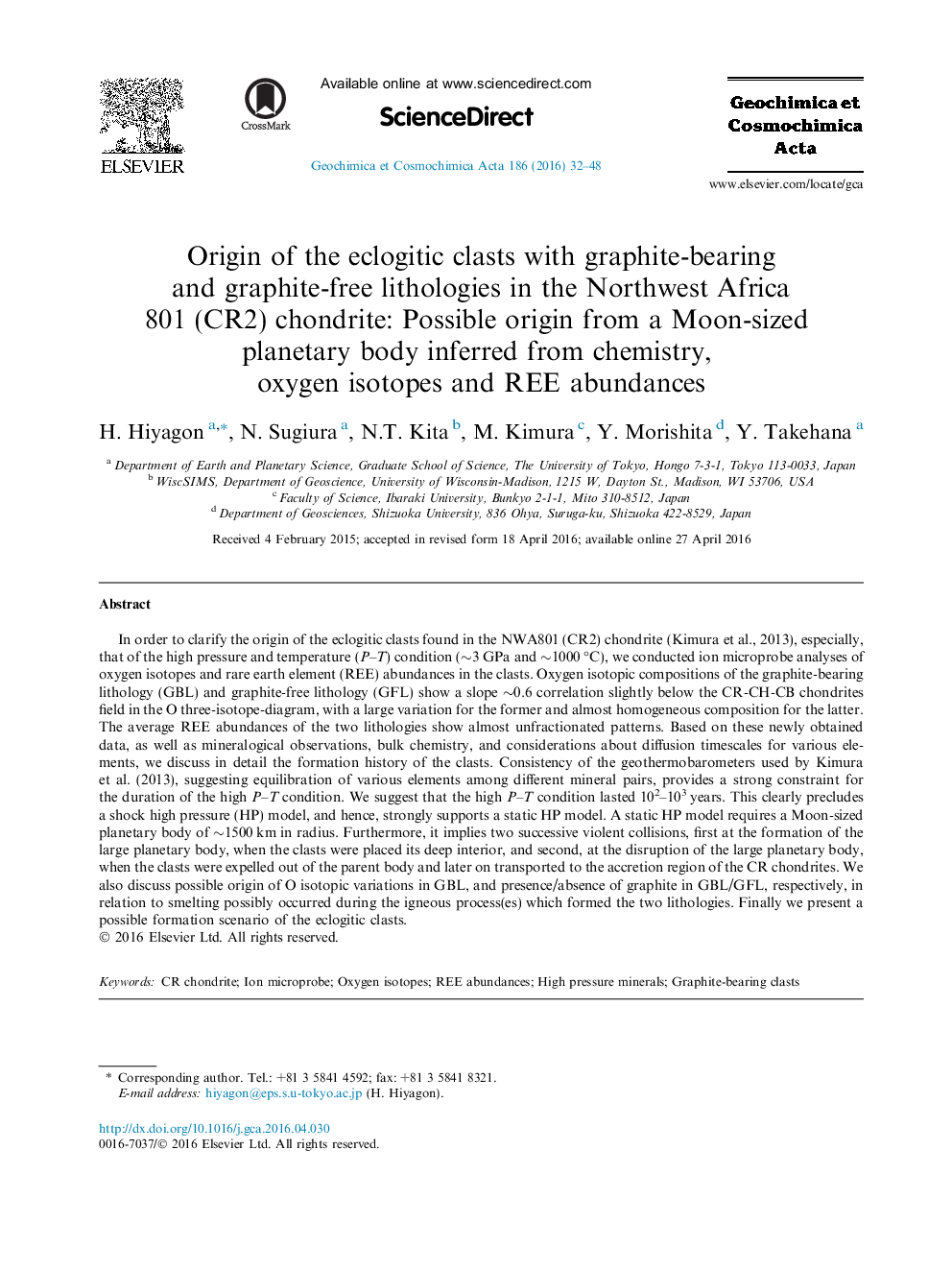| کد مقاله | کد نشریه | سال انتشار | مقاله انگلیسی | نسخه تمام متن |
|---|---|---|---|---|
| 6437277 | 1637971 | 2016 | 17 صفحه PDF | دانلود رایگان |

In order to clarify the origin of the eclogitic clasts found in the NWA801 (CR2) chondrite (Kimura et al., 2013), especially, that of the high pressure and temperature (P-T) condition (â¼3 GPa and â¼1000 °C), we conducted ion microprobe analyses of oxygen isotopes and rare earth element (REE) abundances in the clasts. Oxygen isotopic compositions of the graphite-bearing lithology (GBL) and graphite-free lithology (GFL) show a slope â¼0.6 correlation slightly below the CR-CH-CB chondrites field in the O three-isotope-diagram, with a large variation for the former and almost homogeneous composition for the latter. The average REE abundances of the two lithologies show almost unfractionated patterns. Based on these newly obtained data, as well as mineralogical observations, bulk chemistry, and considerations about diffusion timescales for various elements, we discuss in detail the formation history of the clasts. Consistency of the geothermobarometers used by Kimura et al. (2013), suggesting equilibration of various elements among different mineral pairs, provides a strong constraint for the duration of the high P-T condition. We suggest that the high P-T condition lasted 102-103 years. This clearly precludes a shock high pressure (HP) model, and hence, strongly supports a static HP model. A static HP model requires a Moon-sized planetary body of â¼1500 km in radius. Furthermore, it implies two successive violent collisions, first at the formation of the large planetary body, when the clasts were placed its deep interior, and second, at the disruption of the large planetary body, when the clasts were expelled out of the parent body and later on transported to the accretion region of the CR chondrites. We also discuss possible origin of O isotopic variations in GBL, and presence/absence of graphite in GBL/GFL, respectively, in relation to smelting possibly occurred during the igneous process(es) which formed the two lithologies. Finally we present a possible formation scenario of the eclogitic clasts.
Journal: Geochimica et Cosmochimica Acta - Volume 186, 1 August 2016, Pages 32-48